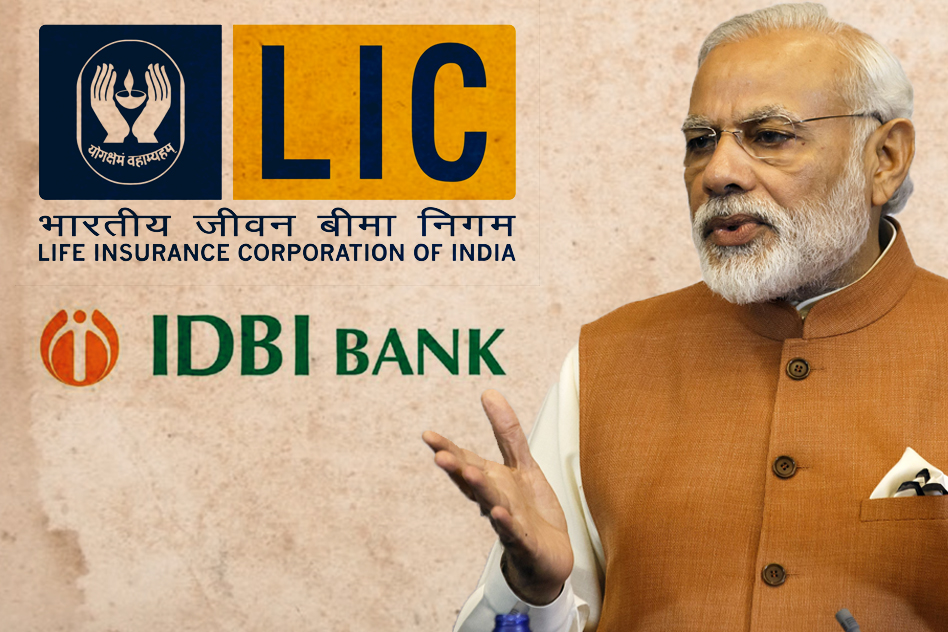
LIC Board Approves Proposal To Acquire 51% Stake In Debt-Ridden IDBI Bank
17 July 2018 10:54 AM GMT
On Monday, July 16, the board of LIC approved the proposal to acquire a 51% stake in debt-ridden IDBI bank. The proposal already has the nod from IRDA, and nods from SEBI, RBI and PMO are expected to be in favour considering that the government wants to wash its hands from the troubled bank.
However, many have questioned the wisdom behind this move. LIC itself is losing market share rapidly and IDBI needs a large amount of capital infusion at least for the next several years.
IDBI with 55KCr NPAs; 8,200Cr loss this year. All because of corrupt loans to Crony Corporates who ran away with our money. Now Govt forces LIC to bail it out with our life insurance money!Just as ONGC forced to Bail out GSPC where Modi sunk 20KCr for Gas! https://t.co/zGhTzQqdBU
— Prashant Bhushan (@pbhushan1) July 16, 2018
There is a theoretical possibility of synergy as LIC can use the existing network of IDBI to serve its own business. However, the move still highlights the failure of successive governments to bring in private investment.
Secretary, Department of Economic Affairs, Subhash Garg said in New Delhi, “IDBI Bank needs capital so they would issue preferential shares. The other way is that they can buy from the government but that doesn’t provide capital to IDBI Bank, so it (issuing preferential shares) is the preferred way to do it.”
However, both LIC and IDBI employees and unions are reportedly against this deal.
#IDBI Employees going on weeklong strike from Monday 16th July against proposed stake selling to LIC.
LIC unions have already opposed this stake setting by saying that this will be a Dent in interest of LIC policy holder's
Both sides,Its #taxpayers money.#saveIDBIbank #saveIDBI— Bankers Ki Baat (@BankersKiBaat) July 15, 2018
What is the issue?
Life Insurance Corporation of India (LIC) is the medium of choice for millions of Indians when it comes to securing their future financial well-being. The Indian government is considering asking LIC to bail-out IDBI bank, the worst performing public sector bank, with tax-payer money. The problem staring us right in the face is that if the bank continues to sink down the drain, then what about LIC’s fiduciary responsibility to policyholders.
What does the government want?
LIC has often been the government’s lackey when it comes to buying unwanted things. For the past two years, the centre has failed to find any buyers for the struggling IDBI bank. IDBI’s gross non-performing assets are over $8 billion, a staggering 28 percent of the total. If all of IDBI’s distressed loans are marked down, then NPAs would become 36% of the total. Simply put, for every 100 Rs loaned by the bank, 36 Rs become Non-Performing Asset.
The government infused more than Rs 10,000 crore in the fiscal year 2017-2018. Then in May 2018, Rs 7,881 crore was again infused in IDBI, taking the government’s shareholding to almost 86% in the bank. As per reports, IDBI still needs more than Rs 10,000 crore capital infusion.
So, the government is considering that LIC, which already has more than 10% share in IDBI from some previous rescue attempts, should either infuse around Rs 21,000 crore to acquire a 51% stake or it infuses at least Rs 13,000 crore making its stake in the bank around 40%. Now, board of LIC has approved 51% accquisition proposal.
Usually, a majority stakeholder has controlling rights in a company. However, according to a report in BloombergQuint, LIC will not have a say in the bank’s management.
The government wants to bypass the risk-prevention measures
This plan, if it goes through, exposes LIC and millions of Indian citizens to a contagion risk. In layman terms, it means that if LIC puts policyholders’ money into IDBI, then an economic downturn or a collapse of IDBI will spread the problem to millions of citizens for no fault of their own. This is like taking an infection from a small contained part and letting it loose in the whole body.
Insurers do not buy stakes in banks or non-insurer agencies. This is a standard practice followed across the world.
In India, the Life Insurance Corporation, Act 1956 and the Insurance Laws (Amendment) Act, 2015 prohibit LIC (and other insurers) to acquire more than 15% stake in any company. Also, section 35 of the Insurance act prevents LIC from acquiring or controlling a non-insurance company.
Insurance Regulatory and Development Authority of India (IRDA) has approved this, now the Securities and Exchange Board of India (SEBI) will have to grant special consideration to LIC.
Now, even if the government can reduce its stake in IDBI without the need of an approval from the Parliament, IDBI will still have to amend its Articles of Association by a special resolution passed by its shareholders.
Why risk the hard-earned money of the Indian citizens for a failing bank?
There have been previous cases when a profitable state-owned entity, such as LIC or ONGC, has been used to bail out debt-ridden companies. This reflects the government’s inability to find buyers, and the government’s response, in turn, will further decrease the prospect of lucrative privatisation in the future.
Economist-author Vivek Kaul took to Twitter and explained the problems in a series of tweets.
The government is ready to sell IDBI Bank to LIC. This is wrong at multiple levels. Let's try and understand the points one by one.
— Vivek (@kaul_vivek) June 23, 2018
This move exposes LIC and Indian citizens to unnecessary and avoidable risk. So, the question becomes why to do this in the first place.
If the government wriggles out from the failing IDBI bank, it won’t have to infuse any capital in the short-term. Moreover, the government can also claim that they are on track with the disinvestment targets.
But what about the common people?
 All section
All section













